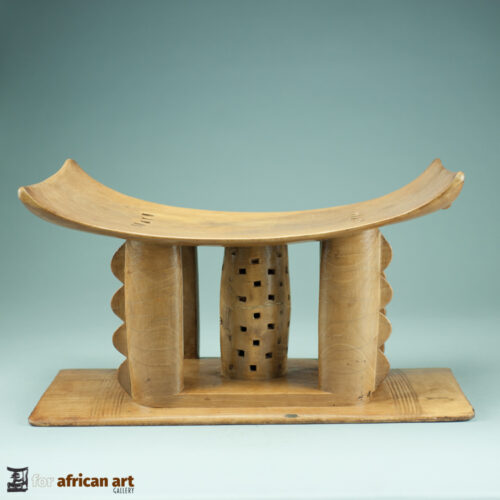Asante People
Asante People
The Rich Culture, History, and Art of the Asante People
The Asante people or Ashanti of West Africa are renowned for their rich and vibrant culture, history, and art. They are one of the largest ethnic groups in Ghana and have a diverse and complex cultural heritage that has enthralled and captivated many collectors of African art. The Asante have an extensive history, which incorporates royalty, status, and cultural rituals that have been the backbone of their traditions for centuries. In this article, we delve into the history, culture, and art of the Asante people, exploring some of the fascinating features that make them an essential reference in African art.
History of the Asante People
The Asante people have a rich cultural heritage that comprises traditional customs, social events, and religious beliefs. The Asante Kingdom was a significant political and economic power in the Gold Coast and the surrounding region for centuries. The Kingdom was established in the 17th century by Osei Tutu and became one of the most prosperous and culturally rich nations in West Africa. The Asante are famous for their royalty, which is evident in their many beautifully crafted and ornate golden crowns and other ceremonial regalia. These symbols of status and power were worn by the Asante King, his chiefs, and other dignitaries.
Art of the Asante People
Art is an essential component of Asante culture, and it has played a significant role in the Kingdom’s history. Asante art is admired for its elegance, style, and intricate craftsmanship. The Asante people are skilled in various art forms, including weaving, pottery, carving, and metalwork. The Asante produce sculptures, textiles, and masks that are highly prized by collectors of African art worldwide. Some of the famous Asante art objects include kente cloth textiles, brass goldweights, and wooden fertility dolls.
Culture of the Asante
One of the most impressive components of Asante culture is the Asante royal funeral ceremony. This funeral ceremony is a significant event in the Kingdom and is a demonstration of respect for the ruling dynasty and ancestors. The ceremony, known as Akan Abusua Fuu, is a multi-day event involving rituals, dance, drumming, and other cultural displays. The event is attended by people from all walks of life, including chiefs, dignitaries, and the general public.
The Asante people are renowned for their love of festivals and community events, which they celebrate with much fervor and enthusiasm. The Asante people celebrate many festivals throughout the year, each with distinct cultural and religious significance. The most famous of all Asante festivals is the Akwasidae festival. The Akwasidae festival is celebrated six times a year and is a time when people show respect and homage to their ancestors. The festival is usually marked with pomp and fanfare, and various cultural events, such as drumming, dancing, and games.
In conclusion, the Asante people have a rich, vibrant, and complex culture, history, and art that are admired and celebrated worldwide. Their history is steeped in tradition, royalty, and cultural rituals that have been passed down from generation to generation. The Asante people are skilled in various art forms, including weaving, pottery, carving, and metalwork. Their artwork is characterized by elegance, style, and intricate craftsmanship. From their impressive golden crowns to their ornate kente cloths, Asante art is highly prized by collectors worldwide. Their festivals and community events are a testament to their love of culture, music, and dance. In short, the cultural history and art of the Asante people are a fascinating and vital reference in African art.
Share This Article, Choose Your Platform!
Get updates about our new items, news and information.
We will process the personal data you have supplied in accordance with our privacy policy.






